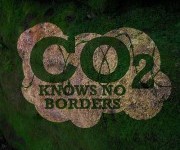Cross-posted from Climate Progress.
The U.S. Energy Information Administration (EIA) issued its “International Energy Outlook” this week. For anyone concerned about the uncontrolled rise in carbon emissions — the primary heat-trapping gas fueling dangerous global warming — it paints a very grim future.
Under a business-as-usual climate science deniers’ fantasy scenario, the EIA projects that global carbon dioxide emissions will rise some 40 percent from 2008 to 2035:
Such an emissions path would all but ensure multiple, simultaneous, ever-worsening catastrophes for the nation and the world — widespread Dust-Bowlification; multi-foot sea level rise (SLR) followed by SLR of six to 12-plus inches a decade until the planet is ice-free; massive species loss; the ocean turning into large, hot acidified dead zones; and ever-strengthening superstorms.
The EIA assumes virtually no new climate and clean energy policies in their “reference” case. That’s why it is best called a climate science deniers’ fantasy scenario. America and the world just keep listening to the fossil fuel industry’s siren song of “do nothing.”
Of course, EIA’s forecasting ability is notoriously poor, much as yours would be if you always assumed that the future would be like the past. For instance, the EIA all but ignores the obvious evidence that oil production is peaking and projects: “The price reaches $108 per barrel in 2020 and $125 per barrel in 2035 in the IEO2011 Reference case.” Does anybody in the energy industry believe that?
Because they forecast with eyes wide shut, EIA projects global energy demand will grow by 53 percent, with most of that demand being met by fossil resources:
Most of the global increase in consumption will come from (surprise!) China and India. According to the EIA, in 2008, China and India represented about 21 percent of global demand. In 2035, both countries will represent 31 percent of global demand.
And while the renewable energy sectors in China and India are booming, EIA projects those countries will join the rich countries in taking no action to avert catastrophes that will probably harm them more than the rich countries:
World coal consumption increased by a total of 30 percent from 2003 and 2008, largely because of China’s fast-growing energy demand. In China alone, coal consumption increased by 71 percent over the five-year period. Although the global recession had a negative impact on coal use in almost every other part of the world in 2009, coal consumption continued to increase in China. In the absence of policies or legislation that would limit the growth of coal use, China and, to a lesser extent, India and the other nations of non-OECD Asia consume coal in place of more expensive fuels in the outlook.
All that fossil fuel use causes the dramatic increase in carbon dioxide, mostly in emerging economies. By 2027, China’s CO2 emissions are double ours! The global recession that hit developed countries hardest appears to have done what no diplomat could do — kept emissions growth relatively low for the next decade. But the slow-down in CO2 emissions in OECD countries will be counteracted by the high-growth economies of Asia, which will represent 74 percent of new emissions.
World energy-related carbon dioxide emissions increase at an average annual rate of 1.3 percent from 2008 to 2035 in the IEO2011 reference case. OECD emissions increase by only 0.2 percent per year on average, but non-OECD emissions increase at 10 times that rate. OECD emissions fell in 2008 and in 2009 — primarily because of the global recession and high oil prices in 2008. In the IEO2011 reference case, OECD carbon dioxide emissions do not return to 2008 levels until after 2020.
While the EIA does make it seem like our grim future is due to non-OECD countries, they do at least include one graph that shows who is to blame for most cumulative emissions — the source of the overwhelming majority of warming now and in the near future:
The bottom line is that the EIA scenario is a poorly imagined, do-nothing case. The study makes projections about energy consumption and emissions growth based upon assumptions about very limited policy action and very modest technology advance in clean energy. So, theoretically, there’s still a chance to change this course.
The key word, however, is “theoretically.” For now, the deniers can pop the champagne.



